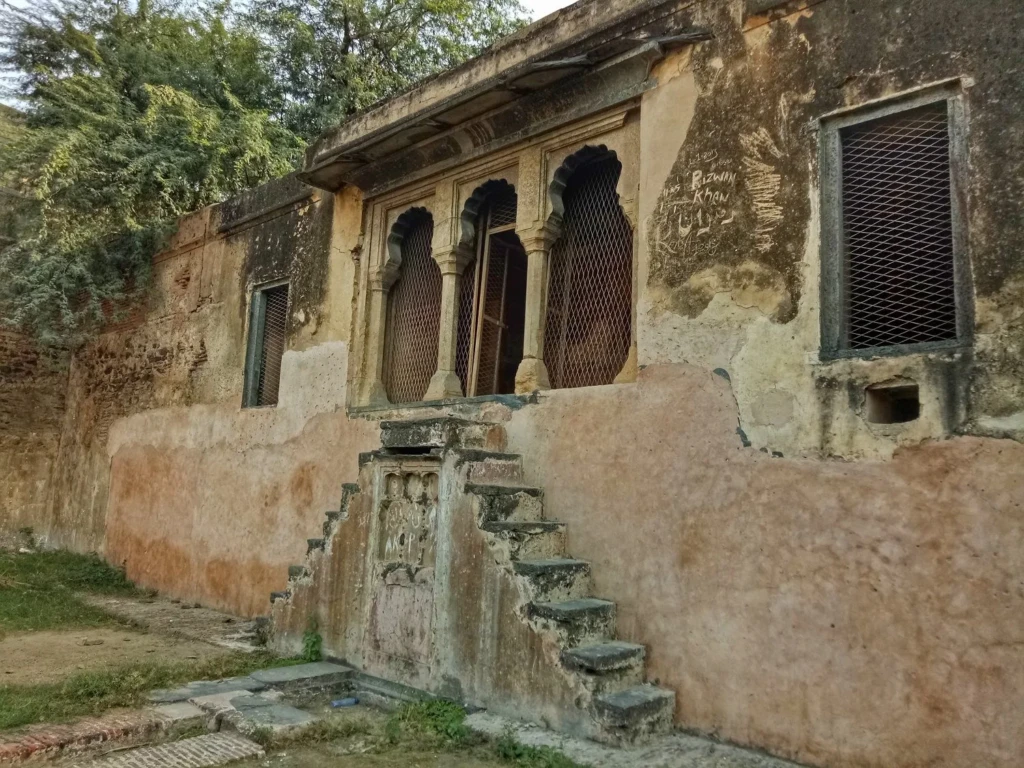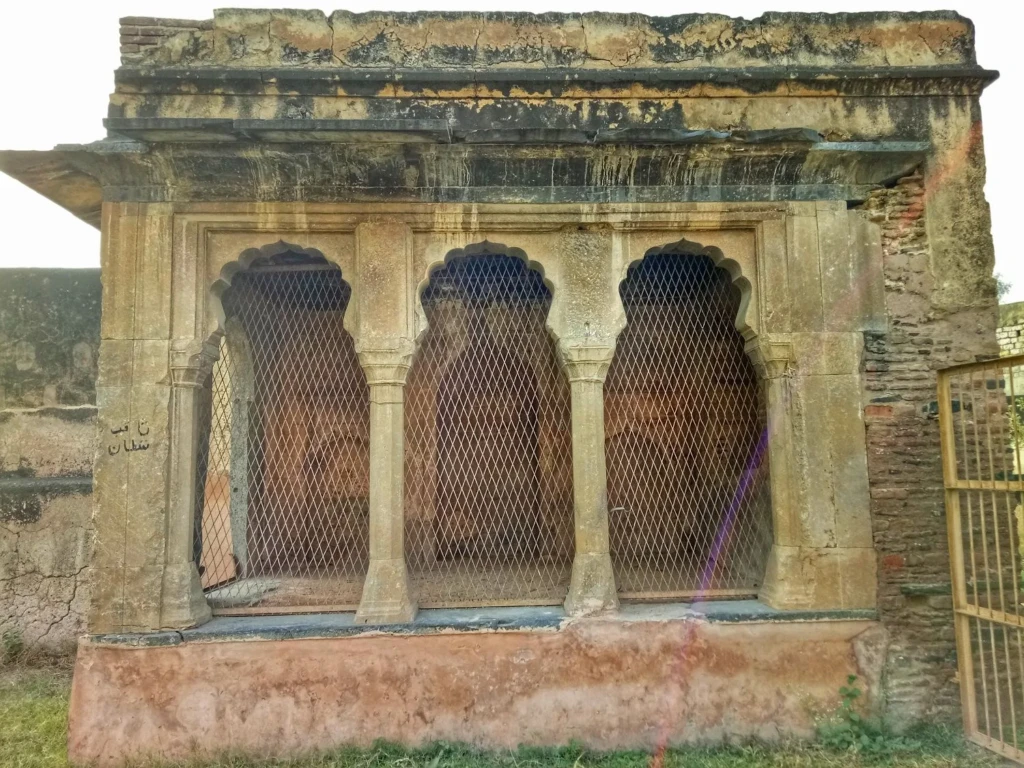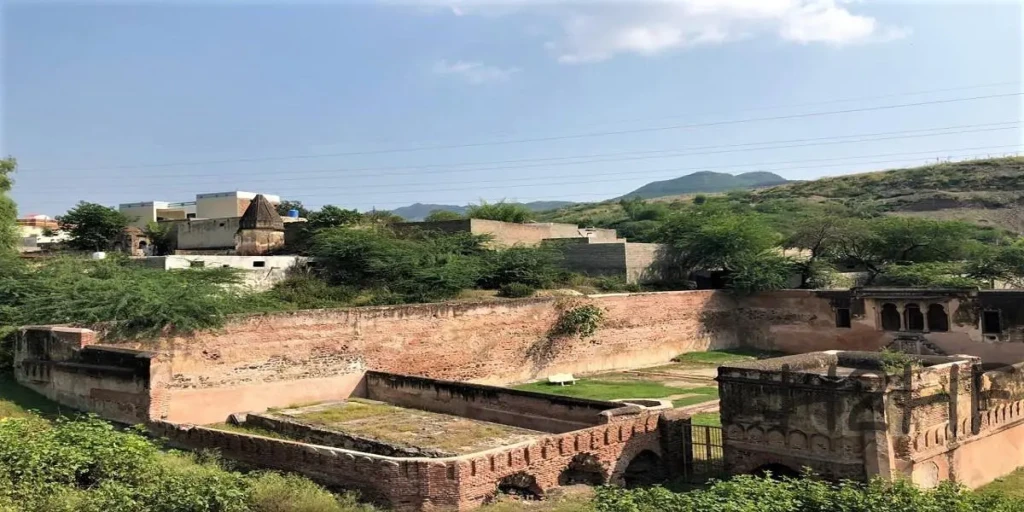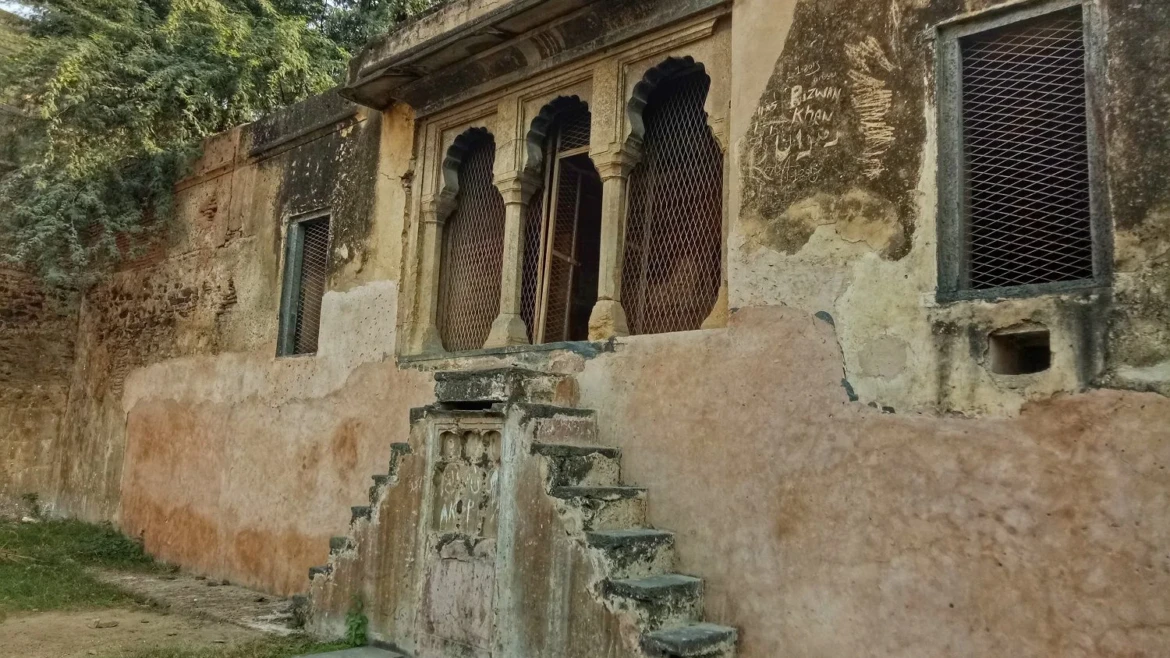INTRODUCTION
The best monument in the area in terms of architecture is Behram ki Baradari. This is surrounded by a sizable enclosure wall made of lime plaster and tiny bricks, with merlon ornamentation specifically on the west enclosure wall. Sang-e-Abri is used for the pillars, while black stone is used for the front frames.

To give Behram ki Baradari a rectangular courtyard and a well-balanced appearance, the entire construction has been thoughtfully placed in the center of the southern side.
LOCATION
As you travel towards Peshawar from Rawalpindi via Attock Bridge, you will come across a magnificent palace called Behram ki Baradari. Behram ki Baradari is located in Attock, Punjab.
WHAT IS THE MEANING OF BARADARI IN THE MUGHAL GARDEN?
The word “baradari” means “twelve doors”. A baradari is a pillared Mughal pavilion, Situated on the eastern wall of the garden, under Humayun’s Tomb, the eastern fountain. The West Gate, the baradari at Humayun’s Garden Tomb is also known as “The East Pavilion”.
ABOUT BEHRAM KI BARADRI

Behram ki Baradari is said to be believed that it was built by Behram Khan, the son of the well-known Pashto poet Khushal Khan Khattak.
When you enter the boundary of Baradari you will see a vast yard which is divided into four parts by water channels and these water channels connect with a pond in the center. The boundary walls are tall throughout the entire area. The Baradari is in the southern part of the palace. The Baradari’s four pillars were constructed using finely trimmed Abri stones.
There are two rooms on each side of the Baradari, decore with lime plaster in diamond and geometrical design. The Baradari hall features small water channels that flow down from a slope. That connects a pond that helps to irrigate four gardens. In the back of the north wall of Baradari, there are some artifacts of the Royal Bath and there is a hall on the left side which also has the pillars of Abri stone.
WHY DOES BARADARI’S WERE BUILT?

These buildings were especially suitable for the honorable concubines’ “courtesan dance” presentations. They were also suitable for private performances and live exhibits by various writers and artists in front of the reigning monarchs during the period.
The Baradari, or Pavilion, is a typical building type, as a late spring construction throughout the Mughal Empire.
Baradaris also often used to held religious gatherings, particularly for Muslim people (such as Friday and Eid prayers).
CONCLUSION
This is a cultural heritage and religiously close to the sentiments of the people of Pakistan. It is a building or a pavilion with twelve doors to allow free flow of air. Behram ki Baradari has three doorways on each side of a square-shaped structure. The particular structure is valuable for its fresh air during summer.



63 Comments
SDiozxswidly
аккаунт для рекламы площадка для продажи аккаунтов
Olasxwidly
безопасная сделка аккаунтов маркетплейс для реселлеров
SDiozxswidly
купить аккаунт продать аккаунт
Olivewidly
покупка аккаунтов профиль с подписчиками
Josephwidly
площадка для продажи аккаунтов безопасная сделка аккаунтов
RobertTig
безопасная сделка аккаунтов маркетплейс аккаунтов
Droswidly
аккаунт для рекламы магазин аккаунтов
Olivewidly
магазин аккаунтов социальных сетей купить аккаунт с прокачкой
Peterdaw
купить аккаунт с прокачкой аккаунты с балансом
RichardTen
продать аккаунт продать аккаунт
JamesCledo
заработок на аккаунтах https://ploshadka-prodazha-akkauntov.ru/
Olivewidly
продажа аккаунтов маркетплейс аккаунтов
Bryantbeini
маркетплейс аккаунтов соцсетей площадка для продажи аккаунтов
RichardTen
магазин аккаунтов магазин аккаунтов
DavidNaisk
Buy Pre-made Account Account Sale
JasonRah
Buy accounts accountsmarketplacepro.com
MichaelMibra
Website for Buying Accounts Purchase Ready-Made Accounts
WalterFlact
Buy and Sell Accounts Guaranteed Accounts
JaredSoals
Account Selling Platform Account Purchase
BrianCoaps
Account Purchase Account exchange
Ronaldhex
Account Market Account Selling Service
ThomasGat
Account Trading Service Account Purchase
BruceCUBOW
Account Trading Platform Account Trading Platform
Williamsep
Secure Account Sales Account Purchase
Ronaldhex
Buy Pre-made Account Account Selling Service
BrandonGuede
find accounts for sale accounts marketplace
EdmundDeats
account sale social media account marketplace
RomeoGaH
verified accounts for sale account exchange service
DonaldSab
sell accounts verified accounts for sale
Keithvet
account acquisition ready-made accounts for sale
RobertGeasy
buy account website for buying accounts
Hectorwem
profitable account sales account acquisition
Richardusero
online account store secure account sales
Carlosjeape
social media account marketplace accounts marketplace
Stephentraky
marketplace for ready-made accounts profitable account sales
Stevenslace
account selling platform account trading
Clydedoulp
secure account purchasing platform accounts marketplace
JohnnyDot
guaranteed accounts account purchase
ThomasPouff
account sale secure account sales
PhilipDib
account marketplace account sale
RichardMouse
buy accounts account catalog
Zacharymax
buy and sell accounts account sale
Kevinjoipt
purchase ready-made accounts secure account sales
Thomasnussy
account exchange service gaming account marketplace
NathanKiz
account market account purchase
BruceObere
account buying service verified accounts for sale
Danielnot
database of accounts for sale https://accounts-store.org/
Geraldmox
account trading accounts marketplace
Jasonvon
social media account marketplace accounts marketplace
ThomasBeada
account catalog database of accounts for sale
accounts-offer.org_Cousy
buy accounts https://accounts-offer.org
accounts-marketplace.xyz_Cousy
sell pre-made account buy accounts
buy-best-accounts.org_Cousy
sell accounts https://buy-best-accounts.org
social-accounts-marketplaces.live_Cousy
ready-made accounts for sale https://social-accounts-marketplaces.live
accounts-marketplace.live_Cousy
secure account purchasing platform https://accounts-marketplace.live
social-accounts-marketplace.xyz_Cousy
account exchange service https://social-accounts-marketplace.xyz/
buy-accounts.space_Cousy
sell pre-made account https://buy-accounts.space
buy-accounts-shop.pro_Cousy
verified accounts for sale https://buy-accounts-shop.pro
buy-accounts.live_Cousy
account purchase buy accounts
accounts-marketplace-best.pro_Cousy
buy pre-made account https://accounts-marketplace-best.pro/
akkaunty-na-prodazhu.pro_Cousy
маркетплейс аккаунтов akkaunty-na-prodazhu.pro
rynok-akkauntov.top_Cousy
биржа аккаунтов rynok-akkauntov.top
kupit-akkaunt.xyz_Cousy
продать аккаунт https://kupit-akkaunt.xyz/